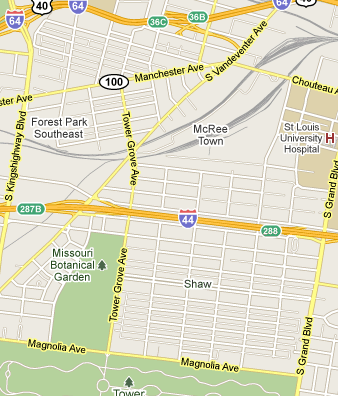
If you don’t normally read the comment section, I encourage you to click through to yesterday’s post about “clean slate” thinking. I particularly want to endorse this perspective from Jed Harris:
I think it turns on on whether one gives more weight to models or observations. The modernist architects and planners had very strong models, and ignored or had contempt for actually existing social reality, so they didn’t work very hard to observe or understand it. They didn’t feel any obligation to test their theories in the small before trying to apply them in the large. They didn’t have to listen to “the little people” who didn’t understand the theory and only knew what they personally observed.
This is exactly right, and it succinctly makes a point that I’ve tried to make in the past. Jed goes on to argue that “the most serious threat from theory run amok at the expense of observation seems to be neo-classical economics.” Prompting a thoughtful response from some other readers, especially Jess.
I think I share Jed’s sentiment but wouldn’t quite put it this way. Models by themselves aren’t threats to anything. What matters is how models are used. The neoclassical model, like all models, is an approximation of reality, and it fits some problems better than others.
To pick a silly example at random, a few weeks ago there was some online chatter about this article where Terry Savage chastises some little girls for running a lemonade stand where the product was available for free:
“You must charge something for the lemonade,” I explained. “That’s the whole point of a lemonade stand. You figure out your costs — how much the lemonade costs, and the cups — and then you charge a little more than what it costs you, so you can make money. Then you can buy more stuff, and make more lemonade, and sell it and make more money.”
This is, of course, ridiculous. There’s no reason all lemonade stands need to be for-profit enterprises. Kids learn a variety of lessons from lemonade stands. Charging might teach valuable lessons about budgeting and self-sufficiency, but giving lemonade away can teach equally valuable lessons about generosity and public service. Savage apparently doesn’t care what the girls’ parents might have hoped their kids would get out of the experience. The mere fact that the girls were failing to conform to the neoclassical model of homo economicus was enough to condemn their activity.
That’s a frivolous example, to be sure, but the same mixture of intellectual laziness and arrogance crops up in more serious contexts. I’ve written before about this Richard Epstein column where he criticizes the free software movement for, basically, failing to conform to the assumptions of the neoclassical model:
The open source movement shares many features with a workers’ commune, and is likely to fail for the same reason: it cannot scale up to meet its own successes. To see the long-term difficulty, imagine a commune entirely owned by its original workers who share pro rata in its increases in value. The system might work well in the early days when the workforce remains fixed. But what happens when a given worker wants to quit? Does that worker receive in cash or kind his share of the gain in value during the period of his employment? If not, then the run-up in value during his period of employment will be gobbled up by his successor – a recipe for immense resentment. Yet that danger can be ducked only by creating a capital structure that gives present employees separable interests in either debt or equity in exchange for their contributions to the company.
This passage bears no relationship to reality. Free software projects scale up just fine without “a capital structure that gives present employees separable interests in either debt or equity.” Contributors are not employees or shareholders. The inability to cash out does not, in fact, generate “immense resentment.” And Epstein could have learned all of this pretty easily if he’d talked to a few people in the free software community before writing his column. But why let facts clutter up a perfectly good theory?
I sometimes get the same vibe when I talk to legal academics about software patents. Many software patent supporters in academia hail from the law-and-economics tradition, and they have a coherent neoclassical story about how patents create incentives for innovation in the software industry. The problem with the story is that it’s utterly at odds with how the software industry actually works. And they don’t seem to understand (or maybe they don’t care) why software patents have generated so much opposition among the people who are actually responsible for producing software innovation.
A humble, bottom-up thinker takes this kind of disconnect between economic theory and lived reality as a reason to re-think the theory—or even better, to learn about a domain before trying to theorize about it. A top-down, “clean slate” thinker takes it as evidence that he needs to do a better job of explaining the theory to the uninitiated or, at worst, to tweak a few of the implementation details.
This “clean slate” vice isn’t unique to neoclassical thinkers by any means; all ideologies are prone to similar excesses. But I think Jed is right that abuses of neoclassical theory are pretty common. Precisely because the neoclassical model is such a powerful way to explain certain social phenomena, a lot of people have convinced themselves that it can be usefully applied to every problem. This isn’t a bad parlor game, but it’s a terrible way to do public policy.
 The next Bottom-Up chat will feature Adam Thierer, president of the Progress and Freedom Foundation and mastermind of the Technology Liberation Front, the world’s leading libertarian tech policy blog. One of his recurring features at TLF is an annual review of the most important tech policy books of the preceding year. He’s starting to work on the 2010 edition, and this is your chance to get a sneak preview of the big tech policy ideas of 2010. Is Nick Carr is right that the Internet is making us stupid? Is Clay Shirky right that the Internet is making us more generous and sociable? Is Richard Clarke right that the Internet is making us vulnerable to terrorists? You’ll have to stop by to find out. We can also talk about Adam’s work on Internet free speech and recent tech policy developments like the Google/Verizon network neutrality deal.
The next Bottom-Up chat will feature Adam Thierer, president of the Progress and Freedom Foundation and mastermind of the Technology Liberation Front, the world’s leading libertarian tech policy blog. One of his recurring features at TLF is an annual review of the most important tech policy books of the preceding year. He’s starting to work on the 2010 edition, and this is your chance to get a sneak preview of the big tech policy ideas of 2010. Is Nick Carr is right that the Internet is making us stupid? Is Clay Shirky right that the Internet is making us more generous and sociable? Is Richard Clarke right that the Internet is making us vulnerable to terrorists? You’ll have to stop by to find out. We can also talk about Adam’s work on Internet free speech and recent tech policy developments like the Google/Verizon network neutrality deal.








